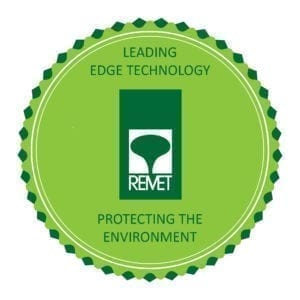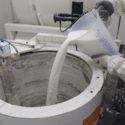Technical Audit Spurs Greater Success
Process Improvements Result in Superior Quality & Higher Margins!
The user, a large commercial Precision Investment Casting Foundry, manufactures general engineering parts. Whereas the parts were of good and merchantable quality, the Technical Community believed that the castings looked rougher than they really should. It wasn’t anything that they could identify, but the castings looked as if they didn’t reflect all the time and effort that actually went into their manufacture, consequently, the commercial team believed that they just could not charge enough for the castings, many of which were in high profile positions, and highly visible.
Remet’s technical team of very experienced engineers were called in to make an evaluation and recommendations to the future. Two engineers spent the best part of a week combing through the manufacturing system. Among the 30 odd detailed actions isolated in the process audit, a few particular items were noteworthy.
The nature and layout of the equipment meant that there was frequent and sometimes significant contamination of the primary sand with low-grade chamotte. This was giving rise to plasticity and deformation at high temperatures.
Although the primary pH was good, a gel test, and stability analysis showed that the primary was heavily contaminated with high levels of polyvalent metals.
The Zircon flour and sand used, billed by the supplier as “Calcined Premium Zircon” was found on Thermo-gravimetric Analysis to be (at best) part calcined, and very heavily indurated with iron, suspected as the source of the slurry instability.
The chamotte, used throughout the back-up layers was found to contain quite large quantities of Muscovite a form of Mica with a very low melting point, which aggravated surface rugosity.
Remet recommended:
- Rearranging of shelling area, with new working practices to ensure integrity of materials,
- Disposal of the primary, and its replacement by a pH stable REMASOL® ADBOND® Advantage,
- Incumbent zircon flour was replaced with REMET® Premium Zircon,
- Incumbent Zircon sand was replaced with REMET® Standard Zircon Sand,
- The first 2 back up coats of chamotte be replaced with REMASIL® 48 RG50,
- Chamotte flour to be replaced throughout with REMET Fused Silica.
Results
- REMET was first to note that the cost of a standard shell used for evaluation purposes had increased, as a result of the extra cost of the raw materials. In fact, the cost of the shell had increased by some 14%.
- This was offset by the reduction of the shell by one layer resulting in reduced material consumption and an increase of only some 7%, with the additional advantage of reduced Work in Progress (WIP) time, much needed increased capacity and reduced energy usage.
- The user in fact, reported reduced energy consumption of around 10% pro-rata. Though in actuality this was converted into an extra capacity of some 14% for the same operating costs.
However, the following improvements were also noted which were critical to the original project:
- Blasting / Cleaning time was reduced by 90% (In fact it was proved that further cleaning would have detracted from the improved surface finish)
- Polishing / fettling time was reduced by 75%
- Cosmetic repair and Weld repair (as a result of excess metalworking) was made redundant
- Scrap was reduced from 7.2% to 3.0% as a result of improved dimensional repeatability.
- Surface finish was improved from > Ra 3,8 to around Ra 2.6 across the board.
Post-Trial Review
On review of the project, the user’s commercial department had commented upon the fact that the end-user had noted the high delivered quality standard, resulting in an increase of the foundry’s vendor rating; consequently the foundry achieved preferred status, boosting its order uptake.
The commercial department also noted that while they preserved their cost sensitivity to Raw Materials that in spite of the increase in consumable costs, the overall improvements in scrap, rework, reduced WIP time, and energy costs “..balanced the equation very favourably toward the Remet system”.
Remet quantified the net advantage being of the order of GBP45,000 in favour of the user, though of course, commercial conversations being as they are, this was neither confirmed or denied.
The technical community summed up the success as the following spoken by the Process Owner: “Everyone has learned a lot??¦working with the Remet engineers has taught us that we are best served by making our process robust such that we can best spend our time being more effective at developing new business”
< Back to case studies



